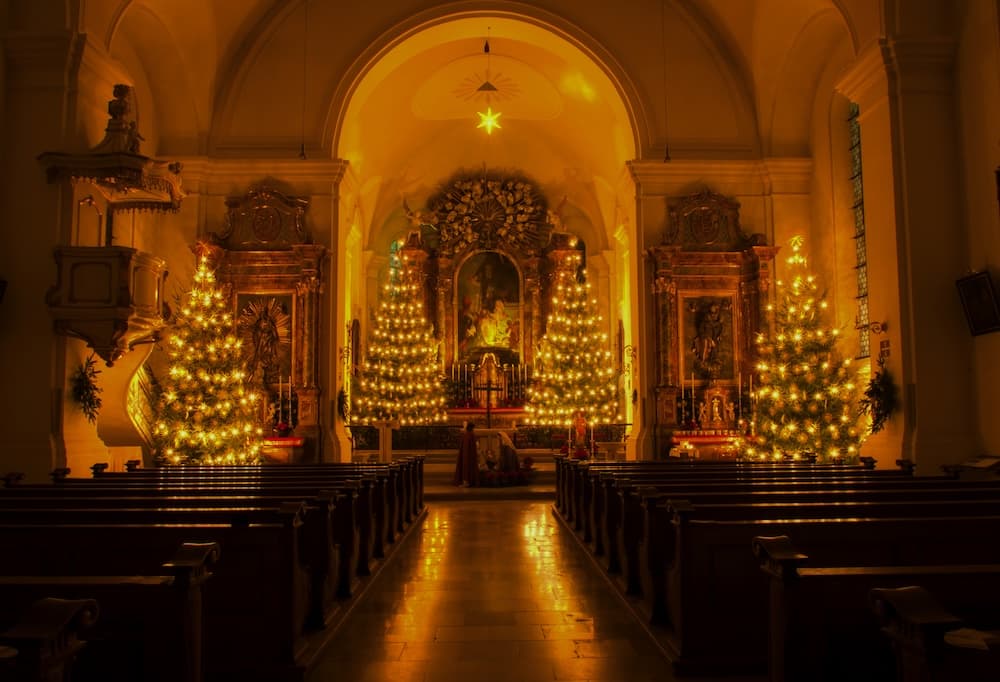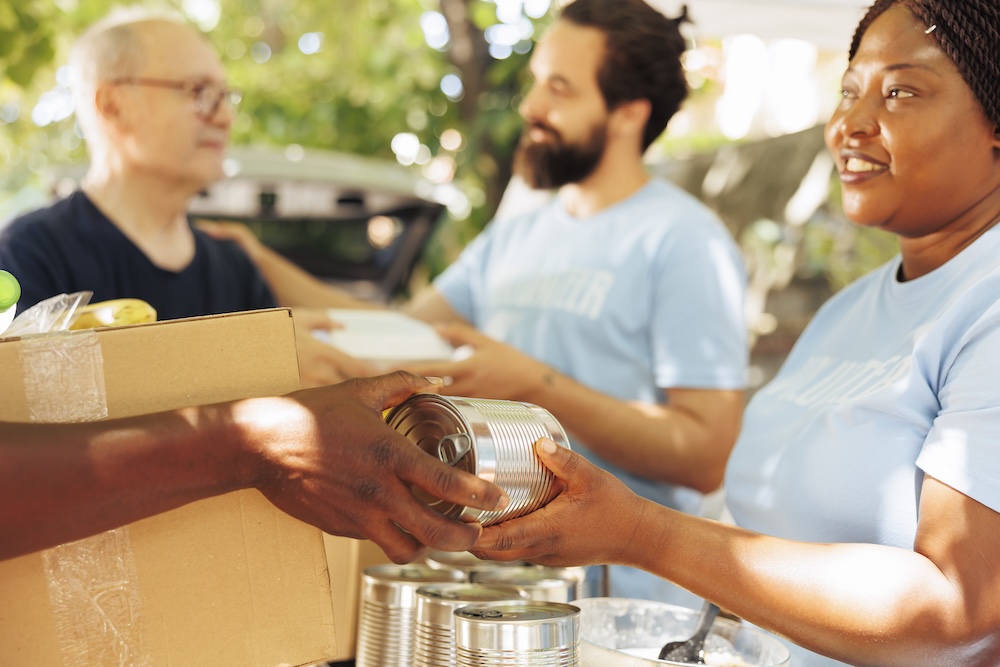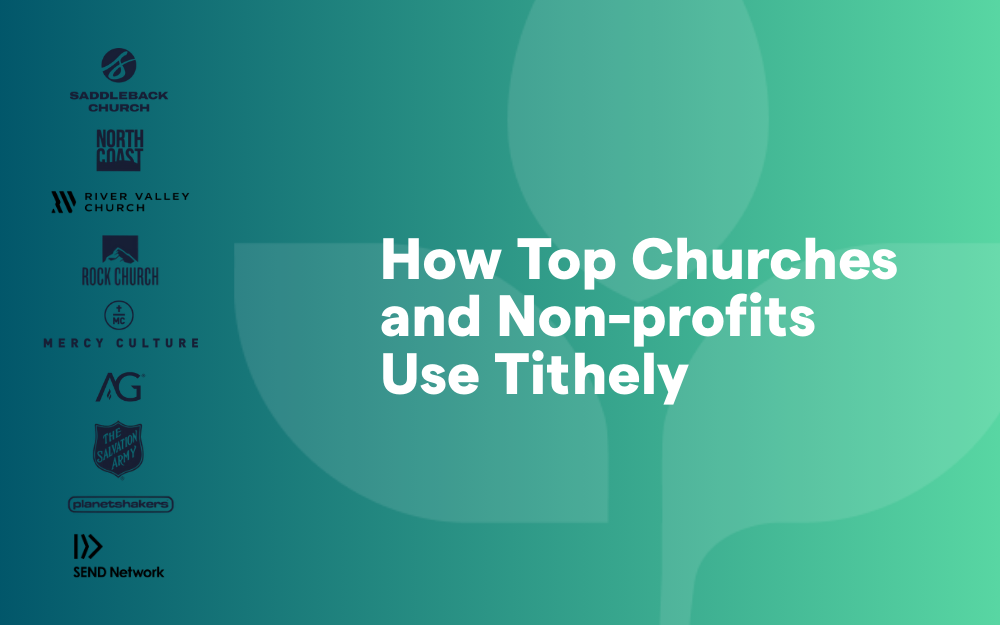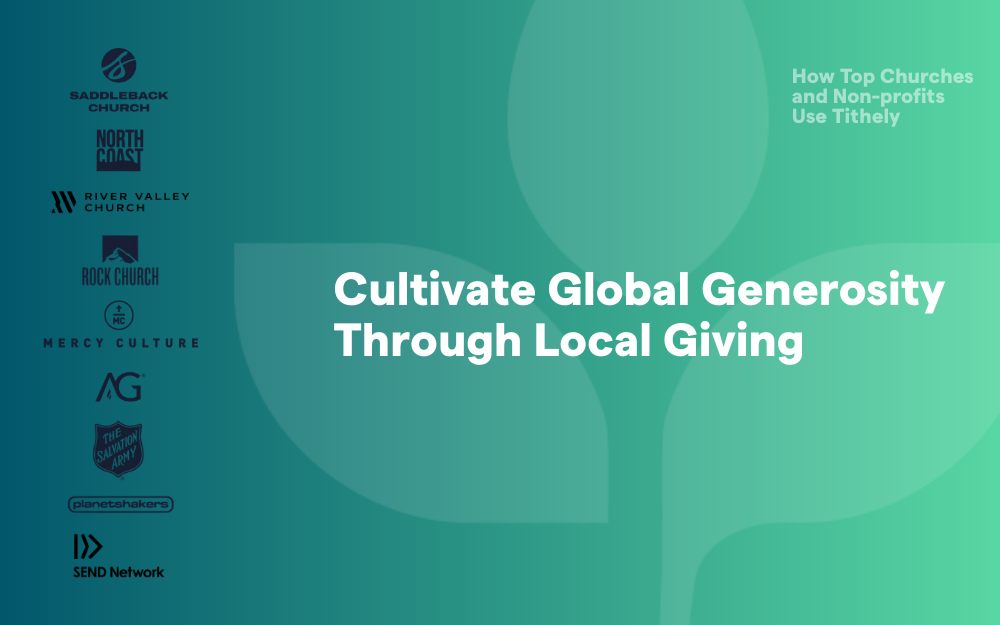Cultivating Generosity in a Season of Scarcity
Discuss these issues regarding fundraising strategy during COVID with your church leadership team.

Everyone is watching the needle.
Tick. Tick. Up. Down. Up. Down.Down. Down. Down.
When will the economy go Up again?
We saw the unemployment rate in the United States rise all the way to 16%. The Great Recession peaked at 11%. The Great Depression grew the unemployment rate all the way to 25%, which during the COVID lockdown is the exact unemployment rate of adults ages 16-24, which is normally only 8%.
It can feel like the world is in a rut.
As a consequence, some pastors have felt a bit of insecurity about making giving appeals while their congregants are losing their livelihoods.
In this article, we will look a bit more closely at these challenges, as well as propose several ways the church can overcome these obstacles and continue to resource the work of the kingdom.
1. The Challenge to Generosity During COVID
The global shutdown prompted by COVID has introduced several severe stress multipliers into the lives of almost every living human. However, three challenges pose the greatest health to the average church member’s sense of security and empowerment to give during this season.
a. The challenge of unemployment
When unemployment strikes, it can send a family into a tailspin of financial instability. This will put them in a position in which it is very difficult to give to the church. If a family has hit this point, they should likely candidates for deaconal assistance until they have regained stability. This is a matter of protecting the family, but it is not a merely humanitarian cost — protecting the financial security of your church members protects the financial stability of your own church.
Recognizing this challenge is an important first step in becoming the kind of church that can overcome it.
b. The challenge of mental health
During COVID, suicide rates have skyrocketed and mental health polls have shown that those who are not able to establish a secure connection to friends and family during this time are suffering from severe symptoms.
This means that discipleship, and even the very fabric of church life, may look and feel a bit “off.” People feel less able to bring positivity to a church when their own lives are falling apart. Especially in California, after half a year of being 90% more isolated than usual, the integrity of the mind begins to soften and basic structures of social belonging and connection can burst at the seams.
c. The challenge of scarcity
We all sense the common lack that has settled like a cloud over the valley of this lockdown. When people don’t have much, it is easy for them to believe that we live in a zero-sum world. What they give, they lose. And when others, such as landlords, creditors, and utility providers are seeking to take from them, the church can easily feel like another “bill.” This is the challenge that our current state of scarcity poses to making a giving appeal on a Sunday.
2. A Path Toward Generosity During Scarcity
No matter what your situation, giving generously during a season of scarcity is scary. Whether you’re paycheck-to-paycheck or have a saturated collection of investments, vulnerability in a context of social and economic fragility feels like risk.
However, there are a few ways that the church can step in and be a counteracting force multiplier against the challenges that threaten the common practice of generosity in your church.
a. Make the church as a nexus of connection
Get people together. Then they will be more likely to tune in on Sunday and participate, see the needs of the community, and receive a prompting from God to give.
Help people find work through the church. Mobilize employers and resources within the church to see how your community to exchange value in order to maintain a deep sense of social connection that keeps the flow of exchange moving.
b. Use common suffering as a resource, not an obstacle
People are hurting. But they also feel great compassion for others who are suffering. Those with resources to spare are more likely to give when they know for certain their contribution will immediately relieve a certain degree of suffering.
c. Don’t shy away from calls to action
Continue to make calls to give, even as tone-deaf as you may fear they will be during this time. The truth is that God is doing something special through your church, and there is no shame in continuing to collect resources for his work. It is not tone-deaf to advance the kingdom of God. The church either acts collectively, or not at all — and those who are present to receive can also be present to give.
Over To You
Be sure to thoroughly investigate the nature of your own church. Who has concerns? What are they? What are the loudest voices? What are majority and minority opinions? How deeply has the shutdown impacted your particular community? How can your church be part of the solution to the problem of giving?
Ask these questions of your church leader team, your volunteers, and your congregation. Your people need each other, and your leadership, now more than ever. God has blessed you with the opportunity to continue mobilizing his people to do the work of his kingdom in this moment, for which God has prepared you all. Seize it for their sake and for the sake of those in your community who desperately need your work to continue.
Sign Up for Product Updates
Everyone is watching the needle.
Tick. Tick. Up. Down. Up. Down.Down. Down. Down.
When will the economy go Up again?
We saw the unemployment rate in the United States rise all the way to 16%. The Great Recession peaked at 11%. The Great Depression grew the unemployment rate all the way to 25%, which during the COVID lockdown is the exact unemployment rate of adults ages 16-24, which is normally only 8%.
It can feel like the world is in a rut.
As a consequence, some pastors have felt a bit of insecurity about making giving appeals while their congregants are losing their livelihoods.
In this article, we will look a bit more closely at these challenges, as well as propose several ways the church can overcome these obstacles and continue to resource the work of the kingdom.
1. The Challenge to Generosity During COVID
The global shutdown prompted by COVID has introduced several severe stress multipliers into the lives of almost every living human. However, three challenges pose the greatest health to the average church member’s sense of security and empowerment to give during this season.
a. The challenge of unemployment
When unemployment strikes, it can send a family into a tailspin of financial instability. This will put them in a position in which it is very difficult to give to the church. If a family has hit this point, they should likely candidates for deaconal assistance until they have regained stability. This is a matter of protecting the family, but it is not a merely humanitarian cost — protecting the financial security of your church members protects the financial stability of your own church.
Recognizing this challenge is an important first step in becoming the kind of church that can overcome it.
b. The challenge of mental health
During COVID, suicide rates have skyrocketed and mental health polls have shown that those who are not able to establish a secure connection to friends and family during this time are suffering from severe symptoms.
This means that discipleship, and even the very fabric of church life, may look and feel a bit “off.” People feel less able to bring positivity to a church when their own lives are falling apart. Especially in California, after half a year of being 90% more isolated than usual, the integrity of the mind begins to soften and basic structures of social belonging and connection can burst at the seams.
c. The challenge of scarcity
We all sense the common lack that has settled like a cloud over the valley of this lockdown. When people don’t have much, it is easy for them to believe that we live in a zero-sum world. What they give, they lose. And when others, such as landlords, creditors, and utility providers are seeking to take from them, the church can easily feel like another “bill.” This is the challenge that our current state of scarcity poses to making a giving appeal on a Sunday.
2. A Path Toward Generosity During Scarcity
No matter what your situation, giving generously during a season of scarcity is scary. Whether you’re paycheck-to-paycheck or have a saturated collection of investments, vulnerability in a context of social and economic fragility feels like risk.
However, there are a few ways that the church can step in and be a counteracting force multiplier against the challenges that threaten the common practice of generosity in your church.
a. Make the church as a nexus of connection
Get people together. Then they will be more likely to tune in on Sunday and participate, see the needs of the community, and receive a prompting from God to give.
Help people find work through the church. Mobilize employers and resources within the church to see how your community to exchange value in order to maintain a deep sense of social connection that keeps the flow of exchange moving.
b. Use common suffering as a resource, not an obstacle
People are hurting. But they also feel great compassion for others who are suffering. Those with resources to spare are more likely to give when they know for certain their contribution will immediately relieve a certain degree of suffering.
c. Don’t shy away from calls to action
Continue to make calls to give, even as tone-deaf as you may fear they will be during this time. The truth is that God is doing something special through your church, and there is no shame in continuing to collect resources for his work. It is not tone-deaf to advance the kingdom of God. The church either acts collectively, or not at all — and those who are present to receive can also be present to give.
Over To You
Be sure to thoroughly investigate the nature of your own church. Who has concerns? What are they? What are the loudest voices? What are majority and minority opinions? How deeply has the shutdown impacted your particular community? How can your church be part of the solution to the problem of giving?
Ask these questions of your church leader team, your volunteers, and your congregation. Your people need each other, and your leadership, now more than ever. God has blessed you with the opportunity to continue mobilizing his people to do the work of his kingdom in this moment, for which God has prepared you all. Seize it for their sake and for the sake of those in your community who desperately need your work to continue.
podcast transcript
Everyone is watching the needle.
Tick. Tick. Up. Down. Up. Down.Down. Down. Down.
When will the economy go Up again?
We saw the unemployment rate in the United States rise all the way to 16%. The Great Recession peaked at 11%. The Great Depression grew the unemployment rate all the way to 25%, which during the COVID lockdown is the exact unemployment rate of adults ages 16-24, which is normally only 8%.
It can feel like the world is in a rut.
As a consequence, some pastors have felt a bit of insecurity about making giving appeals while their congregants are losing their livelihoods.
In this article, we will look a bit more closely at these challenges, as well as propose several ways the church can overcome these obstacles and continue to resource the work of the kingdom.
1. The Challenge to Generosity During COVID
The global shutdown prompted by COVID has introduced several severe stress multipliers into the lives of almost every living human. However, three challenges pose the greatest health to the average church member’s sense of security and empowerment to give during this season.
a. The challenge of unemployment
When unemployment strikes, it can send a family into a tailspin of financial instability. This will put them in a position in which it is very difficult to give to the church. If a family has hit this point, they should likely candidates for deaconal assistance until they have regained stability. This is a matter of protecting the family, but it is not a merely humanitarian cost — protecting the financial security of your church members protects the financial stability of your own church.
Recognizing this challenge is an important first step in becoming the kind of church that can overcome it.
b. The challenge of mental health
During COVID, suicide rates have skyrocketed and mental health polls have shown that those who are not able to establish a secure connection to friends and family during this time are suffering from severe symptoms.
This means that discipleship, and even the very fabric of church life, may look and feel a bit “off.” People feel less able to bring positivity to a church when their own lives are falling apart. Especially in California, after half a year of being 90% more isolated than usual, the integrity of the mind begins to soften and basic structures of social belonging and connection can burst at the seams.
c. The challenge of scarcity
We all sense the common lack that has settled like a cloud over the valley of this lockdown. When people don’t have much, it is easy for them to believe that we live in a zero-sum world. What they give, they lose. And when others, such as landlords, creditors, and utility providers are seeking to take from them, the church can easily feel like another “bill.” This is the challenge that our current state of scarcity poses to making a giving appeal on a Sunday.
2. A Path Toward Generosity During Scarcity
No matter what your situation, giving generously during a season of scarcity is scary. Whether you’re paycheck-to-paycheck or have a saturated collection of investments, vulnerability in a context of social and economic fragility feels like risk.
However, there are a few ways that the church can step in and be a counteracting force multiplier against the challenges that threaten the common practice of generosity in your church.
a. Make the church as a nexus of connection
Get people together. Then they will be more likely to tune in on Sunday and participate, see the needs of the community, and receive a prompting from God to give.
Help people find work through the church. Mobilize employers and resources within the church to see how your community to exchange value in order to maintain a deep sense of social connection that keeps the flow of exchange moving.
b. Use common suffering as a resource, not an obstacle
People are hurting. But they also feel great compassion for others who are suffering. Those with resources to spare are more likely to give when they know for certain their contribution will immediately relieve a certain degree of suffering.
c. Don’t shy away from calls to action
Continue to make calls to give, even as tone-deaf as you may fear they will be during this time. The truth is that God is doing something special through your church, and there is no shame in continuing to collect resources for his work. It is not tone-deaf to advance the kingdom of God. The church either acts collectively, or not at all — and those who are present to receive can also be present to give.
Over To You
Be sure to thoroughly investigate the nature of your own church. Who has concerns? What are they? What are the loudest voices? What are majority and minority opinions? How deeply has the shutdown impacted your particular community? How can your church be part of the solution to the problem of giving?
Ask these questions of your church leader team, your volunteers, and your congregation. Your people need each other, and your leadership, now more than ever. God has blessed you with the opportunity to continue mobilizing his people to do the work of his kingdom in this moment, for which God has prepared you all. Seize it for their sake and for the sake of those in your community who desperately need your work to continue.
VIDEO transcript
Everyone is watching the needle.
Tick. Tick. Up. Down. Up. Down.Down. Down. Down.
When will the economy go Up again?
We saw the unemployment rate in the United States rise all the way to 16%. The Great Recession peaked at 11%. The Great Depression grew the unemployment rate all the way to 25%, which during the COVID lockdown is the exact unemployment rate of adults ages 16-24, which is normally only 8%.
It can feel like the world is in a rut.
As a consequence, some pastors have felt a bit of insecurity about making giving appeals while their congregants are losing their livelihoods.
In this article, we will look a bit more closely at these challenges, as well as propose several ways the church can overcome these obstacles and continue to resource the work of the kingdom.
1. The Challenge to Generosity During COVID
The global shutdown prompted by COVID has introduced several severe stress multipliers into the lives of almost every living human. However, three challenges pose the greatest health to the average church member’s sense of security and empowerment to give during this season.
a. The challenge of unemployment
When unemployment strikes, it can send a family into a tailspin of financial instability. This will put them in a position in which it is very difficult to give to the church. If a family has hit this point, they should likely candidates for deaconal assistance until they have regained stability. This is a matter of protecting the family, but it is not a merely humanitarian cost — protecting the financial security of your church members protects the financial stability of your own church.
Recognizing this challenge is an important first step in becoming the kind of church that can overcome it.
b. The challenge of mental health
During COVID, suicide rates have skyrocketed and mental health polls have shown that those who are not able to establish a secure connection to friends and family during this time are suffering from severe symptoms.
This means that discipleship, and even the very fabric of church life, may look and feel a bit “off.” People feel less able to bring positivity to a church when their own lives are falling apart. Especially in California, after half a year of being 90% more isolated than usual, the integrity of the mind begins to soften and basic structures of social belonging and connection can burst at the seams.
c. The challenge of scarcity
We all sense the common lack that has settled like a cloud over the valley of this lockdown. When people don’t have much, it is easy for them to believe that we live in a zero-sum world. What they give, they lose. And when others, such as landlords, creditors, and utility providers are seeking to take from them, the church can easily feel like another “bill.” This is the challenge that our current state of scarcity poses to making a giving appeal on a Sunday.
2. A Path Toward Generosity During Scarcity
No matter what your situation, giving generously during a season of scarcity is scary. Whether you’re paycheck-to-paycheck or have a saturated collection of investments, vulnerability in a context of social and economic fragility feels like risk.
However, there are a few ways that the church can step in and be a counteracting force multiplier against the challenges that threaten the common practice of generosity in your church.
a. Make the church as a nexus of connection
Get people together. Then they will be more likely to tune in on Sunday and participate, see the needs of the community, and receive a prompting from God to give.
Help people find work through the church. Mobilize employers and resources within the church to see how your community to exchange value in order to maintain a deep sense of social connection that keeps the flow of exchange moving.
b. Use common suffering as a resource, not an obstacle
People are hurting. But they also feel great compassion for others who are suffering. Those with resources to spare are more likely to give when they know for certain their contribution will immediately relieve a certain degree of suffering.
c. Don’t shy away from calls to action
Continue to make calls to give, even as tone-deaf as you may fear they will be during this time. The truth is that God is doing something special through your church, and there is no shame in continuing to collect resources for his work. It is not tone-deaf to advance the kingdom of God. The church either acts collectively, or not at all — and those who are present to receive can also be present to give.
Over To You
Be sure to thoroughly investigate the nature of your own church. Who has concerns? What are they? What are the loudest voices? What are majority and minority opinions? How deeply has the shutdown impacted your particular community? How can your church be part of the solution to the problem of giving?
Ask these questions of your church leader team, your volunteers, and your congregation. Your people need each other, and your leadership, now more than ever. God has blessed you with the opportunity to continue mobilizing his people to do the work of his kingdom in this moment, for which God has prepared you all. Seize it for their sake and for the sake of those in your community who desperately need your work to continue.




























